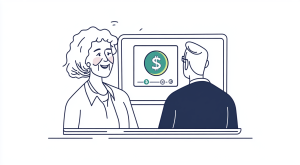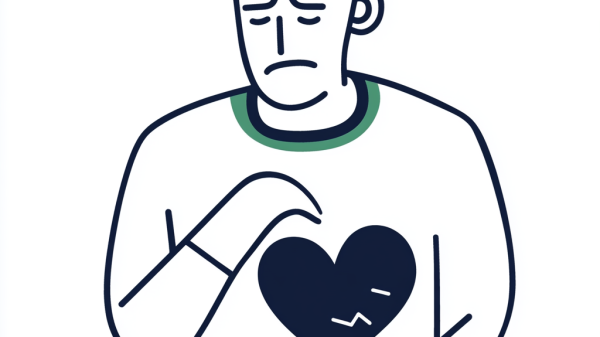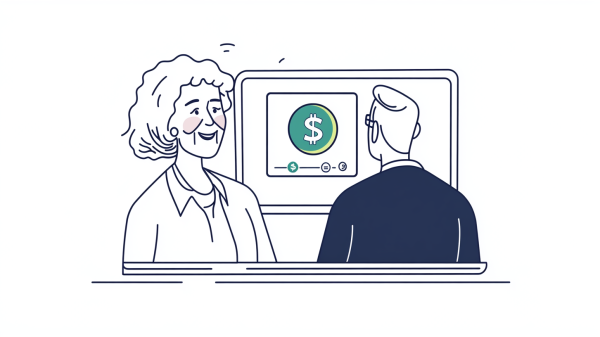Social Media Scams: How Fraudsters Use Popular Platforms to Access Your Bank Account
Social media has transformed how we connect, shop, and share our lives. Unfortunately, it has also created fertile ground for sophisticated scammers to target victims through Authorised Push Payment (APP) fraud. These scams leverage the trust, immediacy, and personal connection of social platforms to convince victims to transfer money directly from their bank accounts.
How Social Media Enables APP Fraud
Social media platforms create unique opportunities for fraudsters to access your banking details:
- Direct connection: Scammers can contact you personally through private messages
- Trust building: They can create convincing profiles with stolen photos and fabricated histories
- Targeted approach: Your public posts reveal personal information that scammers use to tailor their approach
- Seamless payment requests: Links take you directly to payment platforms or banking apps
Let’s examine the most prevalent social media scams that culminate in bank transfers and how to protect yourself.
Marketplace and Shopping Scams
How the Bank Transfer Process Works
- Attractive listing: You spot a bargain on Facebook Marketplace, Instagram Shopping, or other platform marketplaces
- Seller engagement: The seller responds quickly and seems legitimate
- Bank transfer request: They refuse to use the platform’s payment protection, insisting on direct bank transfer
- Pressure tactics: They mention other interested buyers to create urgency
- Banking app payment: You make a faster payment through your banking app to “secure” the item
After transferring funds, the seller either disappears completely or provides endless excuses about delivery delays before eventually cutting contact.
Real-World Example
Jenny found a rare designer handbag on Facebook Marketplace listed at 70% of retail price. The seller, “Sarah,” had a profile showing a young mother with many photos dating back several years. Sarah explained she needed to sell quickly due to unexpected bills and offered a slight discount for immediate payment.
She insisted on bank transfer, claiming the platform’s fees were too high. Jenny transferred £850 from her NatWest account via Faster Payments. Sarah promised next-day delivery but became increasingly evasive. The profile disappeared three days later, and Jenny discovered the photos were stolen from another user.
Investment Opportunity Scams
The Social Media Investment Funnel
- Targeted advertising: You see a professional-looking ad promoting investment opportunities with impressive returns
- Information harvesting: Clicking the ad takes you to a form requesting contact information
- Personal approach: You receive calls or messages from “investment advisors” who seem knowledgeable
- FOMO exploitation: They share screenshots of supposed profits and client testimonials
- Banking app utilisation: You’re guided to make transfers via your banking app to “secure your position”
These scams frequently use images of celebrities or business leaders without permission and falsely claim endorsements from well-known investment programmes like Dragons’ Den or BBC news features.
Real-World Example
Raj saw a Facebook advertisement featuring a well-known British entrepreneur apparently endorsing a property investment opportunity. After filling out an information request, he received a call from “Alex” at “UK Property Investments Ltd.” Alex shared impressive portfolio performance documents and connected Raj to a WhatsApp group of supposed investors discussing their returns.
After several persuasive calls, Raj made three separate transfers totalling £25,000 from his Lloyds account. The WhatsApp group initially celebrated his joining, but when he later questioned why his online portal showed no activity, he was removed from the group, and all contact numbers became unreachable.
“Get Verified” Badge Scams
The Verification Payment Trap
This increasingly common scam targets social media users who want verified status badges:
- Impersonation contact: You receive a message from an account claiming to be from “Instagram Support” or similar
- Badge offer: They offer to verify your account for a fee
- Official appearance: They use platform logos and professional language
- Payment instructions: They provide bank details for the “verification fee”
- Bank transfer execution: You transfer the amount through your banking app
Once payment is sent, the scammer either disappears or demands additional fees for “processing” or “final approval.”
Banking Red Flags
- Requests for payments to personal rather than business accounts
- Account numbers that don’t match official company information
- Instructions to mark payments as “friends and family” or with misleading references
- Pressure to complete payment quickly before “verification spots fill up”
Real-World Example
Morgan, an aspiring influencer, received a direct message from “Instagram Verification Team” offering a blue verification badge for £200. The profile used Instagram’s logo and referenced Morgan’s recent posts, making it seem legitimate.
After some discussion, Morgan transferred £200 from her Barclays account to the provided details. The scammer then claimed there was a “processing issue” requiring an additional £150 payment. When Morgan questioned this, they threatened to “blacklist” her account from future verification. She realised it was a scam but couldn’t recover her initial payment.
Romance and Relationship Scams
The Social Media Love Trap
- Profile discovery: Scammers create attractive profiles and either contact you directly or wait for you to respond to their friend request
- Relationship building: They invest weeks or months in developing emotional connection
- Crisis creation: Once trust is established, they present an emergency requiring financial help
- Transfer request: They provide bank details for you to send money
- Multiple payments: Initial transfers lead to additional requests as the fictional situation evolves
How Banks Are Involved
Victims make transfers from their personal bank accounts directly to accounts controlled by scammers, often:
- Sending multiple payments over time as the relationship deepens
- Transferring to UK accounts that are quickly moved overseas
- Ignoring warnings from friends, family, or even their banks about suspicious transactions
Real-World Example
Richard, recently widowed, accepted a friend request from “Helena,” whose profile showed a similar-aged woman with shared interests. For three months, they exchanged daily messages and occasional video calls (always with technical “issues” affecting clarity).
Helena claimed to be a British citizen working as a contractor in Malaysia. When her equipment was supposedly damaged, she asked Richard for £3,000 to replace it, promising repayment when her contract finished. Richard sent the money via his Halifax banking app. This led to several more emergencies, each requiring bank transfers. Richard lost £18,000 before his daughter intervened and revealed the scam.
Competition and Prize Notification Scams
The Competition Payment Process
- Prize notification: You receive a message claiming you’ve won a competition or been selected for a prize
- Verification request: To claim your prize, you must verify your identity or pay a small “processing fee”
- Bank details provided: You’re given account details for transferring the fee
- Banking app payment: You make the payment through your banking app
- Additional barriers: After paying, new fees or taxes emerge that must be paid before receiving your prize
These scams often impersonate legitimate brands with fake pages or accounts that look remarkably similar to official ones.
Real-World Example
Thomas received a direct message from “British Airways Official” on Twitter informing him he’d won two first-class tickets in a promotion he vaguely remembered entering. The profile had thousands of followers and used the correct logo.
To claim his prize, Thomas needed to pay a £99 “verification and processing fee.” He transferred the amount from his Nationwide account. After sending the money, he was told he needed to pay £250 in “international taxes” on the tickets. When he questioned this, the account blocked him. Later investigation showed the profile was created just weeks earlier.
Job and Income Opportunity Scams
The Employment Payment Funnel
- Opportunity advertisement: You see a social media post or targeted ad for a flexible, high-paying job
- Application process: You provide personal information through a form or direct message
- Job offer: You’re quickly offered a position with minimal vetting
- Setup requirement: You’re told you need to pay for training, equipment, or registration
- Bank transfer request: You’re provided bank details to make these payments
After making payment, the job either disappears entirely or turns out to be a money muling scheme that could implicate you in money laundering.
Banking Red Flags
- Being asked to pay for equipment before starting work
- Requests to use your personal bank account for “client payments”
- Instructions to quickly forward received funds to other accounts
- Extremely high pay offers for simple tasks
Real-World Example
Aisha saw an Instagram post advertising a “Social Media Evaluator” position paying £30 per hour for flexible, remote work. After a brief online interview via WhatsApp, she was offered the job but needed to pay £250 for “accreditation and training materials.”
She transferred the money from her TSB account. The “employer” then asked her to download specialised software (actually remote access malware) for training. When Aisha became suspicious and refused, all contact ceased, and she lost her payment.
Rental and Accommodation Scams
The Property Payment Trap
- Attractive listing: You see a social media post or marketplace listing for a desirable property at a competitive price
- Landlord contact: The “landlord” responds quickly but can’t show the property in person for various reasons
- Virtual tour: They send photos or videos of the property
- Deposit request: To “hold” the property, they require an immediate deposit
- Bank transfer instruction: They provide bank details for sending the deposit
After transferring funds, the scammer either disappears or requests additional payments before giving access to a property that either doesn’t exist or belongs to someone else.
Real-World Example
Amy found a London flat advertised in a Facebook housing group at a surprisingly reasonable rate. The “landlord” explained he was working in Scotland and couldn’t show the property in person but shared professional photos and videos.
Fearing she would lose the opportunity, Amy transferred a £1,500 deposit from her Monzo account to “secure” the flat. Upon arrival at the address on her move-in date, she discovered the flat belonged to a family who knew nothing about any rental arrangement.
How to Protect Yourself When Using Social Media and Banking Apps
- Never transfer money to people you haven’t met: Use platform-protected payment methods for marketplace purchases
- Research before transferring: Search for the company name plus “scam” before sending any payments
- Verify official accounts: Look for blue verification badges and check account creation dates
- Use reverse image search: Check profile photos to see if they’re stolen from elsewhere
- Be wary of urgent requests: Legitimate opportunities rarely require immediate payment
- Listen to your bank: Take seriously any fraud warnings your bank raises during transfers
- Meet in person when possible: For marketplace purchases, meet in safe, public locations and pay upon receipt
- Question bargains: If a deal seems too good to be true, it probably is
- Consult others: Discuss potential investments or opportunities with trusted friends before sending money
If You’ve Been Scammed Through Social Media
If you’ve fallen victim to a social media scam involving bank transfers:
- Contact your bank immediately: Report the fraudulent transaction as soon as possible
- Report to the platform: Use the platform’s reporting tools to flag the scammer’s account
- Report to Action Fraud: File a report with the UK’s national fraud reporting centre
- Document everything: Save all messages, screenshots, and payment confirmations
- Check reimbursement rights: Under regulations effective October 2024, many APP scam victims have strengthened rights to compensation
How APP Claims Can Help You
At APP Claims, we specialise in helping victims of social media-based APP fraud reclaim their money, even when banks have initially rejected reimbursement requests:
- Free case evaluation: We’ll assess your situation without obligation
- Platform expertise: Our team understands the specific mechanisms of social media scams
- Bank negotiation: We handle all communications with financial institutions
- Evidence compilation: We build compelling cases that banks cannot dismiss
- Ombudsman escalation: When necessary, we take your case to the Financial Ombudsman Service
All on a No Win, No Fee basis.
Social media scams can happen to anyone, regardless of age or technical knowledge. If you’ve been victimised, contact APP Claims today to explore your reimbursement options and begin your financial recovery journey.
This information is regularly updated as social media scam tactics evolve. Last updated: April 2025.








